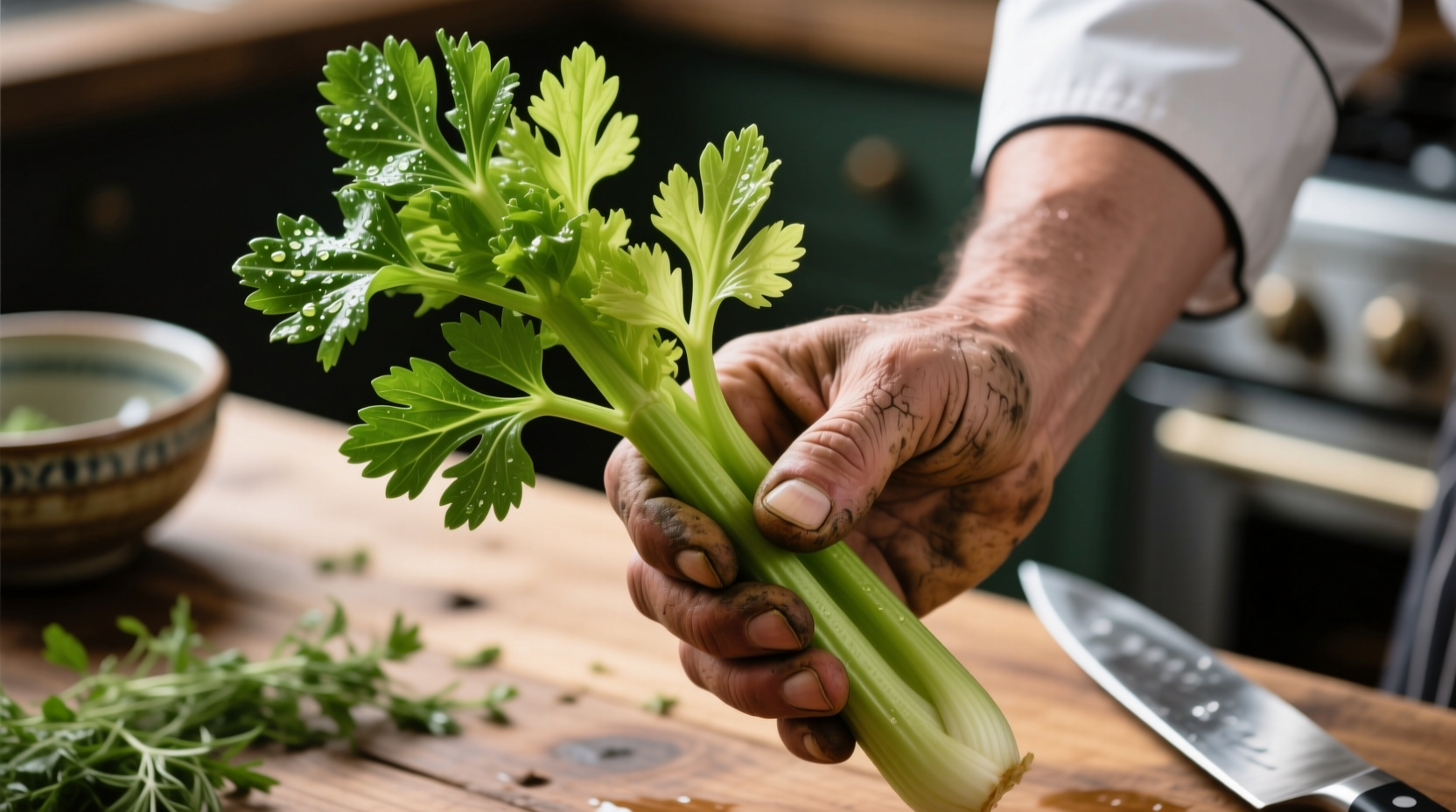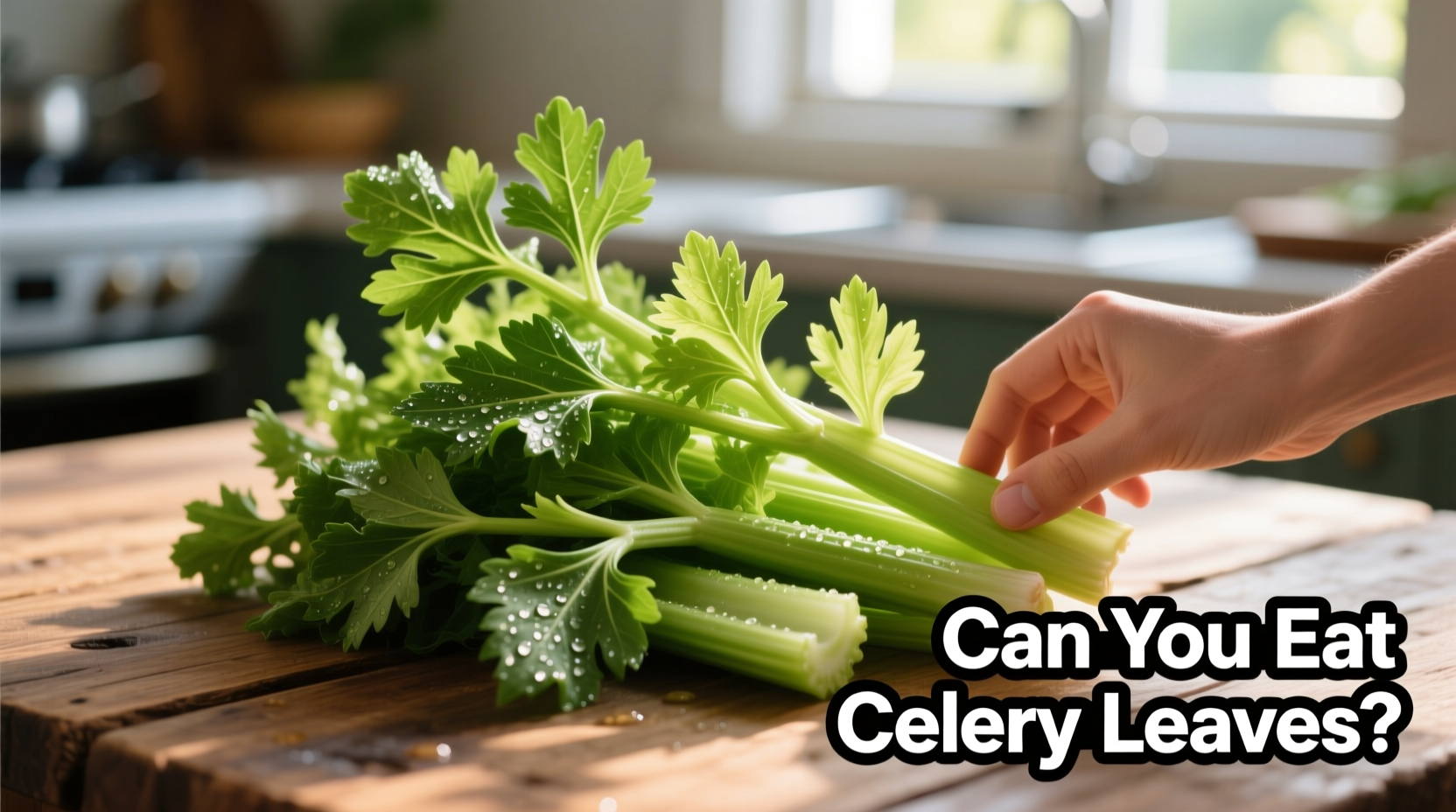Yes, you can absolutely eat celery leaves—they're not only safe but packed with more nutrients than the stalks, offering a vibrant herbal flavor that elevates dishes from soups to salads. Discover how to transform this often-discarded part of celery into a culinary asset while reducing food waste.
Most home cooks toss celery leaves without a second thought, but professional chefs have long prized these feathery greens for their intense flavor and nutritional benefits. If you've ever wondered can you eat celery leaves, the answer is a resounding yes—with significant advantages for both your health and your cooking.
Why Celery Leaves Deserve a Place in Your Kitchen
Celery leaves contain higher concentrations of vitamins and antioxidants compared to the more commonly consumed stalks. According to USDA FoodData Central, celery leaves provide significantly more vitamin K, vitamin C, and calcium per serving than their fibrous counterparts. This nutritional powerhouse deserves recognition beyond being mere garnish.
| Nutrient (per 100g) | Celery Leaves | Celery Stalks |
|---|---|---|
| Vitamin K | 463% DV | 38% DV |
| Vitamin C | 33% DV | 5% DV |
| Calcium | 11% DV | 3% DV |
| Flavonoids | High concentration | Moderate concentration |
This USDA nutritional analysis confirms what chefs have known for years—celery leaves deliver superior flavor and nutrition. When considering is it safe to eat celery leaves, rest assured they pose no health risks when consumed in typical culinary amounts.
Unlocking the Flavor Potential of Celery Leaves
Celery leaves offer a more intense, herbal flavor profile compared to the mild crunch of stalks. Think of them as nature's seasoning blend—earthy, slightly bitter, with aromatic notes that enhance rather than overpower.
How to Use Celery Leaves in Your Cooking
- As fresh herb substitute: Replace parsley in sauces, dressings, and marinades for a more complex flavor
- In stocks and broths: Add during the last 10 minutes of simmering for bright herbal notes
- As salad component: Toss young leaves into green salads for added dimension
- For pesto variations: Blend with basil or as the primary green in herb sauces
- As finishing touch: Chop finely and sprinkle over finished dishes like chives

Practical Storage and Preparation Tips
Maximize the shelf life of celery leaves with these professional techniques:
- Immediate storage: Separate leaves from stalks and store in an airtight container lined with a slightly damp paper towel
- Freezing option: Chop leaves and freeze in ice cube trays with olive oil for ready-to-use cooking portions
- Drying method: Hang small bunches upside down in a cool, dark place for herbal seasoning
- Reviving wilted leaves: Soak in ice water for 15 minutes to restore crispness
When preparing celery leaves, remember they're more delicate than stalks. Add them toward the end of cooking to preserve their vibrant flavor and color—unlike stalks which benefit from longer cooking times to mellow their bitterness.
When to Exercise Caution with Celery Leaves
While celery leaves are generally safe for consumption, certain situations warrant attention:
- Photosensitivity concerns: Like other members of the Apiaceae family, celery contains psoralens which may increase sun sensitivity in large quantities
- Allergy considerations: Those with celery allergies should avoid leaves as they contain higher concentrations of allergenic compounds
- Pesticide exposure: Leaves may retain more pesticide residue than stalks—opt for organic when possible or wash thoroughly
According to the FDA food safety guidelines, celery ranks among the less common food allergens, but those with known sensitivities should exercise caution with all parts of the plant.
Simple Ways to Start Using Celery Leaves Today
Don't let these culinary gems go to waste. Try these beginner-friendly applications:
- Celery Leaf Vinaigrette: Blend 1 cup packed leaves with 3 tbsp vinegar, 1 garlic clove, and 1/2 cup olive oil
- Herb-Infused Oil: Steep leaves in warm olive oil for 2 hours, then strain for salad dressings
- Compound Butter: Mix 2 tbsp chopped leaves with 1/2 cup softened butter and lemon zest
- Green Smoothie Boost: Add 1/4 cup leaves to fruit smoothies for nutritional enhancement
Professional chefs often use celery leaves as a secret weapon for adding depth without overwhelming other flavors. When exploring what to do with celery leaves, remember they work particularly well with fish, chicken, potatoes, and egg dishes where their herbal notes shine.
Reducing Food Waste While Enhancing Flavor
By incorporating celery leaves into your cooking routine, you're not only gaining nutritional benefits but also reducing kitchen waste. The average celery bunch contains approximately 30% leaves by weight—discarding them means throwing away valuable nutrients and flavor potential.
Next time you're preparing celery, treat the leaves as the valuable ingredient they are rather than compost material. Whether you're searching for can you eat celery leaves raw or wondering about cooked applications, these versatile greens offer culinary possibilities that deserve exploration.











 浙公网安备
33010002000092号
浙公网安备
33010002000092号 浙B2-20120091-4
浙B2-20120091-4